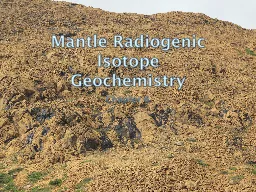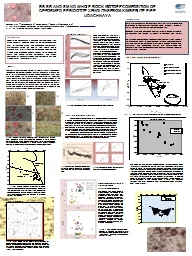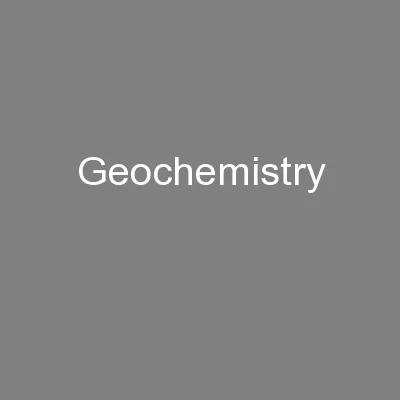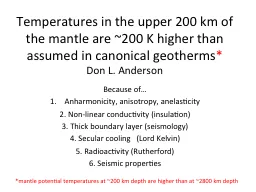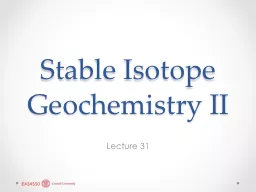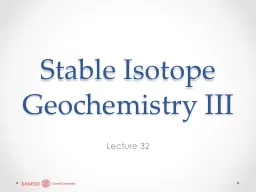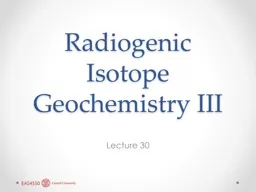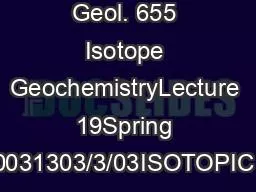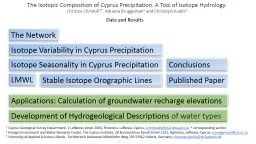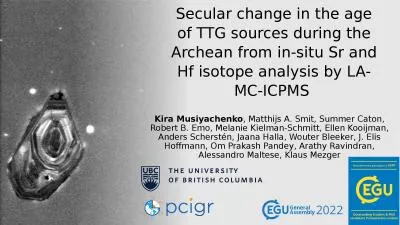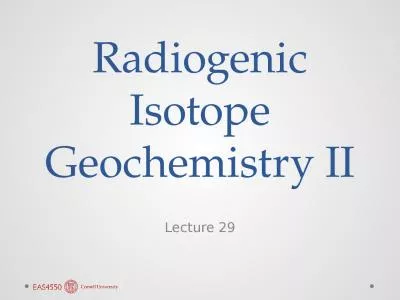PPT-Mantle Radiogenic Isotope Geochemistry
Author : alida-meadow | Published Date : 2016-02-18
Chapter 6 Isotope Geochemistry In isotope geochemistry our primary interest is not in dating but using the timedependent nature of isotope ratios to make inferences
Presentation Embed Code
Download Presentation
Download Presentation The PPT/PDF document "Mantle Radiogenic Isotope Geochemistry" is the property of its rightful owner. Permission is granted to download and print the materials on this website for personal, non-commercial use only, and to display it on your personal computer provided you do not modify the materials and that you retain all copyright notices contained in the materials. By downloading content from our website, you accept the terms of this agreement.
Mantle Radiogenic Isotope Geochemistry: Transcript
Download Rules Of Document
"Mantle Radiogenic Isotope Geochemistry"The content belongs to its owner. You may download and print it for personal use, without modification, and keep all copyright notices. By downloading, you agree to these terms.
Related Documents

